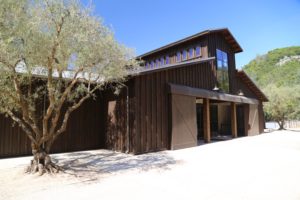
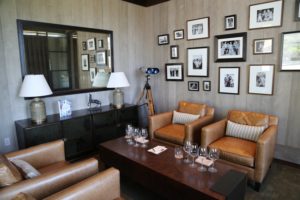
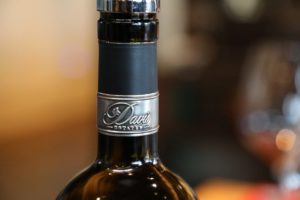 Davis Estates was founded by Mike and Sandy Davis with the purchase of two contiguous properties, the larger piece in 2011 followed by a smaller piece in 2012 (in the Calistoga appellation). The total property is 155 acres. Prior to their purchase the land was owned by longtime residents of the Napa Valley, the Saviez Family (who we originally met with years ago). The original winery on the property dated back to 1900 but burned down during a terrible forest fire in 1946. Visually, the property has changed significantly since the Davis Family took over ownership and by late 2016 the cave, winery and hospitality center were completed after five long years of construction.
Davis Estates was founded by Mike and Sandy Davis with the purchase of two contiguous properties, the larger piece in 2011 followed by a smaller piece in 2012 (in the Calistoga appellation). The total property is 155 acres. Prior to their purchase the land was owned by longtime residents of the Napa Valley, the Saviez Family (who we originally met with years ago). The original winery on the property dated back to 1900 but burned down during a terrible forest fire in 1946. Visually, the property has changed significantly since the Davis Family took over ownership and by late 2016 the cave, winery and hospitality center were completed after five long years of construction.
Mike started a tech company in his garage (Applied Computer Solutions) in Huntington Beach, Southern California in 1989. He sold the company but still serves on their board. He and Sandy have owned a home in Rutherford for a number of years along with a tiny Sauvignon Blanc vineyard on site; they divide their time between Huntington Beach and the Napa Valley. Mike was raised in San Mateo (San Francisco Bay Area) and used to vacation in the summer with his family at the old Napa Valley Ranch Club (was located just southwest of Lake Berryessa in what is still very rural Napa County).
After the sale of his company neither he nor Sandy could envision him retiring. This ambitious project of restoring the historic barn, developing the hospitality center, cave, offices and winery is certainly not your typical retirement project.
Mike has a degree in history from Indiana University Bloomington and his interest in historical items is clearly evident when you visit the property. The original barn on site dates from 1916 and was the primary structure on the property for many years. Mike & Sandy hired noted wine country architect Howard Backen (died 2024) of the architectural firm, Backen, Gillam & Kroeger Architects with the instructions to mirror the look of the new buildings based on the exterior look of the weathered old barn.
They restored, retrofitted and added a bit of wine country rustic charm inside. During the rehabilitation, the barn was moved from its original location on rollers and then raised two feet to its current footprint. One needs time to absorb the diversity of furnishings in this barn – a weighty wooden table is made from the staves taken from 30+ American Oak barrels. Two beautifully restored tractors are also located here, a 1939 John Deere and a 1944 Ford. The Big Ass Fan (labeled as such) is certainly a conversation piece. And if it gets too quiet in here – reach for the remote control to the 1909 Wing and Son player piano. This barn is used for larger group tastings or for club members and also features an outdoor patio and a loft.
A ‘twin’ barn was built to mimic the look and feel of the original barn; this new barn houses their offices and wine lab.
A few other items worth mentioning during any visit here, invariably one’s eye will be drawn to the Kugel (means ball in German), a spherical sculpture made of South African reddish granite that continues to rotate among a thin film of water. This 5,000-pound stone represents a Cabernet Sauvignon grape and sits above a sculpted Cabernet Sauvignon leaf. And the wind vane on top of the new barn features a metal bear – not necessarily a tribute to the California bears, although it could be especially with a grizzly bear being the icon of the state flag. Bears have also been spotted on their property in the hills to the east of the winery. Instead, this is a tribute to Mike; when one meets Mike, one sees that he has the physique of a retired NFL Football player. During college he became known as “the bear”.
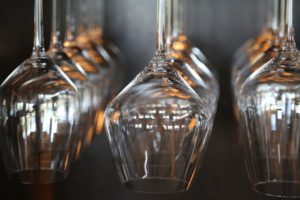
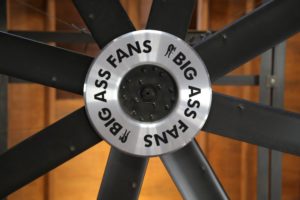 Nearly eleven acres of vines are planted on site, primarily to Cabernet Sauvignon with smaller blocks of Petite Sirah and Cabernet Franc (it is noteworthy to mention their Cabernet Franc vines are 35+ years old). Much of the property is wooded and hillside and will never be planted to grapes although they do still have room to expand their vineyard acreage. Their driveway bisects several vineyard blocks; the small steep Petite Sirah block is located directly behind the parking lot next to the hospitality center. Mike owns additional land on Howell Mountain and his home property in Rutherford. Besides their estate properties, they also source fruit from other premium Napa vineyards they do not own.
Nearly eleven acres of vines are planted on site, primarily to Cabernet Sauvignon with smaller blocks of Petite Sirah and Cabernet Franc (it is noteworthy to mention their Cabernet Franc vines are 35+ years old). Much of the property is wooded and hillside and will never be planted to grapes although they do still have room to expand their vineyard acreage. Their driveway bisects several vineyard blocks; the small steep Petite Sirah block is located directly behind the parking lot next to the hospitality center. Mike owns additional land on Howell Mountain and his home property in Rutherford. Besides their estate properties, they also source fruit from other premium Napa vineyards they do not own.
After purchasing this property, Mike hired a water dowser who soon located a number of areas on site where they would find water. Their deepest well is over 600 feet. One of these wells now houses a windmill which when spins, pumps out a few gallons of water every minute which is in turn stored and used as needed for vineyard irrigation.
Davis Estates employs several winemakers; veteran winemaker consultant Cary Gott made their primary Davis Estates wines and the Hungry Blonde wine until late 2022 at which point, he took more of a consulting role and Philippe Melka consults for the Phase V wines. When Mike was interviewing Philippe for the job, he almost thought Philippe was interviewing him; and he was surprised to discover that Philippe knew so much about the property. It turns out Philippe was bidding on the same property at the same time as Mike. Cary helped design the cave; a number of small lot vessels for fermentation are within the winery including stainless steel, wood and concrete tanks. Each tank has its own pump for pump-overs during harvest.
A number of their wines are produced in quantities of several hundred cases, but they have since grown to a current annual production of approximately 6,000 cases. The primary Davis Estates and Hungry Blond wines are priced very well for the quality. Their first vintage was from 2011; all wines were made off site until the cave was completed – their first vintage made on site was from 2016.
In early fall 2020, the Glass Fire burned much of their property but remarkably spared their winery and hospitality center. Although it did burn several structures including the small old house which used to stand next to the driveway and is where we originally met with Mike Saviez. In honor of first responders that year, Davis Estates produced a 2020 First Responders Chardonnay in which 50% of the profits were donated to locally based first responders.
The 11,000 square foot cave is an impressive show of subterranean elegance. It seamlessly blends the functional aspects of a working winery with art and hospitality. We have explored numerous wine caves in Napa Valley and while not among the largest, this is one of the more memorable ones from a visual perspective.
Hospitality
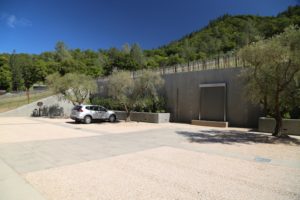
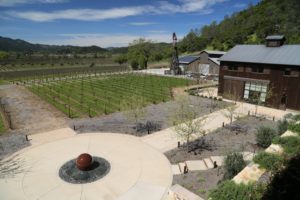 Their hospitality center is world-class with an interior combination that is both rustic and elegant complemented by excellent views looking west across the northern part of Napa Valley. A commercial kitchen is located here offering seasonal small plates prepared by their Executive Chef. Weather permitting the outside terrace is an ideal place for relaxing, soaking in the views and the wines. Oh, and the seating out here features plush and comfortable porch swings hanging from cables which can be slowly rocked back and forth.
Their hospitality center is world-class with an interior combination that is both rustic and elegant complemented by excellent views looking west across the northern part of Napa Valley. A commercial kitchen is located here offering seasonal small plates prepared by their Executive Chef. Weather permitting the outside terrace is an ideal place for relaxing, soaking in the views and the wines. Oh, and the seating out here features plush and comfortable porch swings hanging from cables which can be slowly rocked back and forth.
One could easily spend several hours here to fully absorb the scope as well as the details of the property and the winery. A number of varied and curated personalized experiences are offered for guests with some taking full advantage of the wide diversity of spaces offered on site. The introductory offering, the Estate Food and Wine Pairing Terrace includes a hosted educational tasting of several current releases served with small bites especially created to complement each of the wines.
For a more in-depth visit, consider their 90-minute historical tour and tasting including a visit to the ‘barn’. A 90-minute Library Tasting takes one into the cave where guests enjoy a private personalized experience in their ‘library’ room including a taste of the coveted Phase V wines. And for those looking for a more in-depth experience, allow 2 hours for the highly personalized VIP Experience tour (including a visit inside the cave) and a tasting in the private VIP Crush Room.
Davis Estates Wines
The 2019 Davis Estates Pinot Noir is from the Napa Valley side of Carneros (not far from Saintsbury Winery). This wine is more of a California style Pinot Noir in that it’s a fairly opulent showing focused on the fruit rather than texture or acidity. It is medium ruby in color; the bouquet initially offers some spice notes including of white pepper and old cedar box along with some darker spice notes and a hint of Graham cracker deeper in the aromatics. But give it time to breath and the bouquet becomes more fruit generous including scents of raspberry. One can smell the varietal characteristics. The tannin texture is supple with a light creamy feel across the palate. This wine was aged 9 months in 50% new French oak with the 50% balanced aged in 1 to 2 year used French oak.
The 2018 Davis Estates Merlot was sourced from the Antinori Vineyard (Antica Winery) on Atlas Peak and is 98% Merlot and 2% Petit Verdot. This bottling is dark ruby in color; the darker bouquet offers scents of walnut skin, plum and blackberry. The nose is elegant but also fruit-and features plenty of fruit. This wine is savory and fresh with flavors of dark plum, black cherry and dark chocolate. The juicy finish lingers with dark fruit, pipe tobacco, a woodsy spice and crushed black pepper. The slightly gravelly textured tannins offer a pleasing presence as they seamless roll across the palate. This wine was aged for 22 months in 45% new French oak.
The 2018 Davis Estates Oakville Cabernet Sauvignon is deep ruby in color and nearly opaque in the glass; the bouquet offers powerful aromatics including of blackberry, dark plum, dark cherry and some briar notes. Deeper into the aromas are notes of milk chocolate. The palate offers primarily darker berry fruits. The tannins are dense but rounded and do not feel coarse or harsh. They linger on the long savory finish with both a dust note accompanied by black pepper and some tobacco spices. This wine has plenty of life ahead of it.
The 2012 Davis Estates Petit Verdot shows a lot of life in its youth. It is a robust muscular wine which dominates the palate with both flavor and structure. It is deep ruby and almost purple in the glass; it needs time to open but when it does it starts showing a variety of darker fruits as well tobacco and various spices.
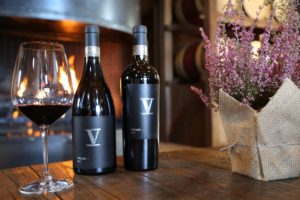
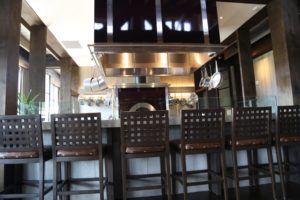
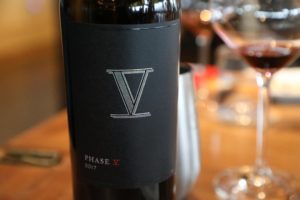 Zephyr is appropriately named as the word refers to a gentle breeze paying homage to the westerly breeze that often develops here in the afternoons. This is a Bordeaux styled blend dominated by Cabernet Sauvignon but whose varietal composition changes each vintage. The 2013 Davis Estate Zephyr (aged 24 months in oak) shows riper yet elegant fruit aromatics which a somewhat briary with aromas of blackberry, dark chocolate and Asian spices (even a bit of white pepper). There is also a subtle dusty component to the bouquet. On the palate, it shows flavors of red cherry with a nice balance between structure and acidity. This wine is very approachable young. The 2018 Davis Estates Zepher is a robust and energetic wine with many layers of both flavor and texture. It is juicy, mouthwatering and savory and its long finish is carried by its youthful tannins. The Zepher is always among their most popular bottlings with customers.
Zephyr is appropriately named as the word refers to a gentle breeze paying homage to the westerly breeze that often develops here in the afternoons. This is a Bordeaux styled blend dominated by Cabernet Sauvignon but whose varietal composition changes each vintage. The 2013 Davis Estate Zephyr (aged 24 months in oak) shows riper yet elegant fruit aromatics which a somewhat briary with aromas of blackberry, dark chocolate and Asian spices (even a bit of white pepper). There is also a subtle dusty component to the bouquet. On the palate, it shows flavors of red cherry with a nice balance between structure and acidity. This wine is very approachable young. The 2018 Davis Estates Zepher is a robust and energetic wine with many layers of both flavor and texture. It is juicy, mouthwatering and savory and its long finish is carried by its youthful tannins. The Zepher is always among their most popular bottlings with customers.
The 2012 Davis Estates Sauvignon Blanc is a pleasing wine from a vineyard in Calistoga which is dry farmed; it shows gold in the glass with an intriguing bouquet containing aromas of dry grass, orange blossom and honeysuckle. This wine was fermented in neutral oak and stainless-steel tanks. It offers some viscosity and weight on the palate and also shows some notes of baking spices.
The 2011 Davis Estates Chardonnay sees no malolactic fermentation; it is dark amber color in the glass with aromas of lemon and toasted oak. The mouth feel is somewhat oily – a nice balance of weight on the palate without too much viscosity. Caramel and plenty of fruit shows on the palate with notes of mocha on the rich, long and lively finish.
A fun wine that is rarely found in Napa Valley is a late harvest Cabernet Franc. Think raspberry jam; the 2013 Davis Estate Pinwheel Cabernet Franc vintage delivers similar aromas as well as flavor. It is not heavily viscous but has plenty of sugar to complement its’ rich flavor. Dessert wine connoisseurs will definitely want to seek out this very limited production wine. They also produce a Pinwheel late harvest Chardonnay.
Phase V
An extremely exclusive membership club offering focuses on the Phase V wines. These are premium wines with a name that pays tribute to the final of the five phases of developing this property: Phase 1: acquisition, Phase 2: improving the existing vineyards and infrastructure, Phase 3: architectural plans, Phase 4: building the winery and Phase 5: crafting the wines. Only two-Phase V wines are made each year, a Petite Sirah and a Cabernet Sauvignon. Both are produced in quantities of only approximately 100 to slightly more than 200 cases each year. Membership to this club caps out at only 150 members (at the time of our latest update to this review they still have some space, but it is filling up fast) and gives one allocation access to a certain number of bottles of the Phase V wine each year and other benefits.
The Phase V Cave Room (called the Cellarium) is one of Napa’s most elegant cave alcoves. Access is via an electronic infrared vein scanner system which is calibrated so only members and employees have access to the room. For members, simply scan your hand and the system will recognize your unique vein pattern. The sizable doors swing open once access has been granted; a single row of barrels line the edges of the wall with various Phase V large format bottles on display. One portion of this alcove was not covered in gunnite and one smells the volcanic ash perhaps before even seeing the raw rock left chiseled by the drill bits.
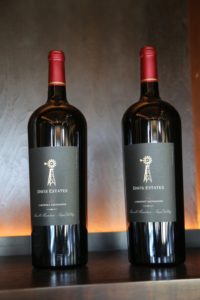 More elegant than opulent, the glass and steel enclosed octagonal Cellarium is a small room within the cave that can be temperature controlled for guests’ preferences. Guests sit at a table made of wood from a specific Monkeypod Tree from Hawaii (a hardwood tree that develops an extremely wide canopy).
More elegant than opulent, the glass and steel enclosed octagonal Cellarium is a small room within the cave that can be temperature controlled for guests’ preferences. Guests sit at a table made of wood from a specific Monkeypod Tree from Hawaii (a hardwood tree that develops an extremely wide canopy).
The 2017 Davis Estates Phase V Cabernet Sauvignon is 100% varietal. This wine is deep ruby and somewhat purple in color and very opaque; the bouquet offers opulent aromatics, showcasing a pleasing union between both fruit and darker baking spices. Offers scents of cardamom and clove and some darker chocolate deeper in the aromatics. One would not be incorrect in descripting its aromatic profile as being decadent. The palate is layered with primarily darker fruits including blackberry, mulberry and dark plum. This is big yet balanced bottling that hits all the right pleasure points on the palate. The tannins are dense but rounded so that the textural feel never feels ‘edgy’ or course. Lingers dusty with a light persistent dryness along with some darker spices including pepper and dried tobacco leaf.
The 2013 Davis Estates Phase V Cabernet Sauvignon is dark ruby red in the glass and shows a perceptible gravelly or dusty note on the aromatics with a hint of sage. Dark fruit driven aromatics show including plum along with darker berries and blackberry. This is a well layered wine that features a density of both flavor and structure on the palate. Dryer, somewhat chalky but not overly coarse tannins persist for some time. These make for a very pleasing mouth feel.
While Petite Sirah is not a variety that Philippe focuses on or is known for, he was already familiar with the tiny block of Petite Sirah on the property and welcomed the opportunity to make wine from it. The 2012 Davis Estates Phase V Petite Sirah shows darker violet in the glass with a hue that is both purple and dark red. A sweetness of fruit is complemented by pretty floral aromas and sweet dessert spices. As the wine breathes an additional aromatic thread is revealed, similar to stewed prunes. There is a dense mid palate with noticeable and surprisingly softer tannins (this is a variety that can sometimes produce coarse grippy tannins). Drinks very well by itself and as a young wine.
—
A Tesla Charging Station and a Universal Electric Charging Station are located next to the guest parking lot.
And guests who used to stay at the nearby Calistoga Ranch (unfortunately burned down in the 2020 Glass Fire) used to be able to make a guided hike from the resort property to Davis Estate using a small trail that cuts through the hills eventually reaching a vineyard road which cuts across the hills on part of the Davis Estate property (offering excellent views of the valley in the distance). And once tastings were finished, guests would be picked up in a private Mercedes and whisked back to the resort.
The majority of their wines are sold direct to consumer through winery visits or through one of their membership offerings with wines shipped 3x per year ranging from 4, 6 or 12 bottle allocations. For more information or to book a memorable experience at this winery, visit: www.davisestates.com
PHOTOGRAPHY
Barn
Hospitality Center
Cave/Winery
Cellarium
Grounds + Vineyards






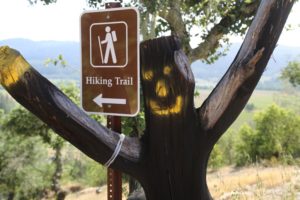
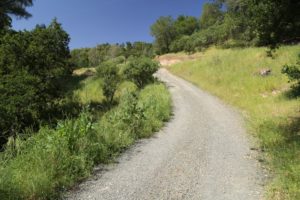
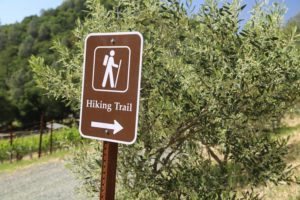
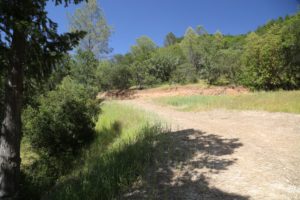
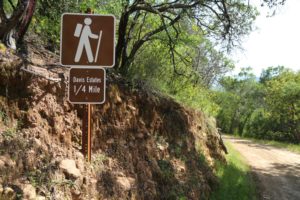
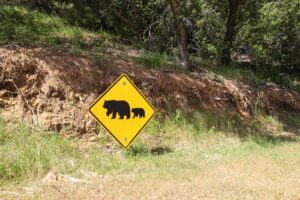
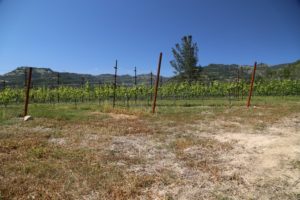
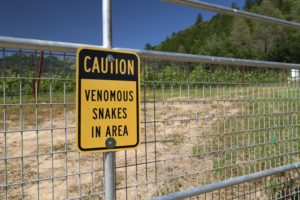
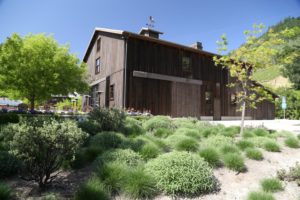
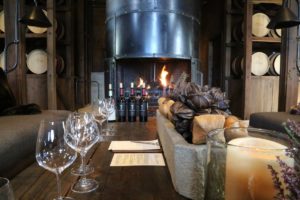
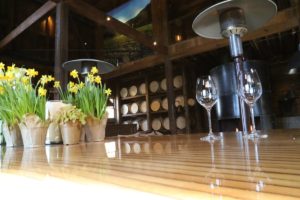
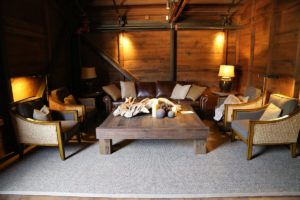
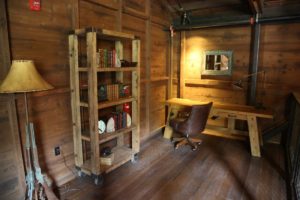
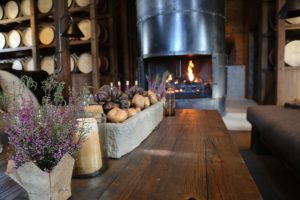
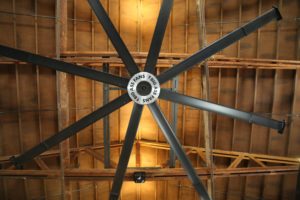
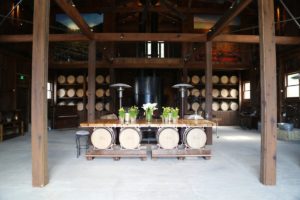
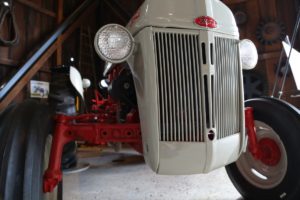
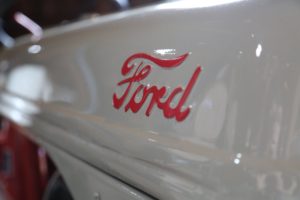
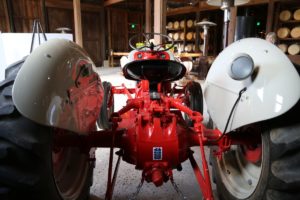
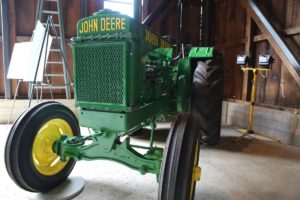
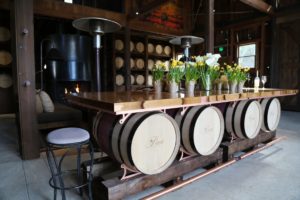
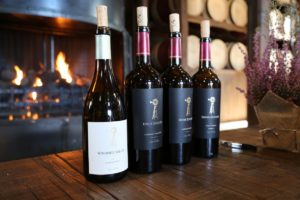
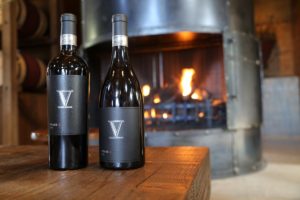
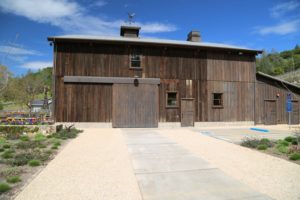
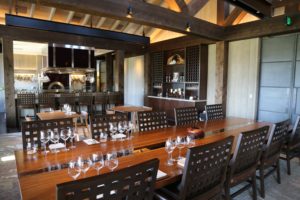
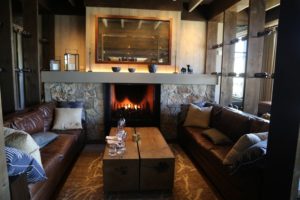
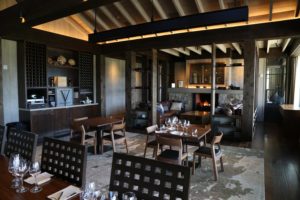
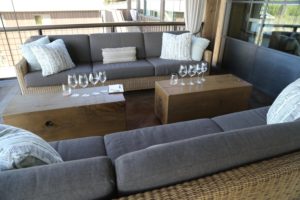
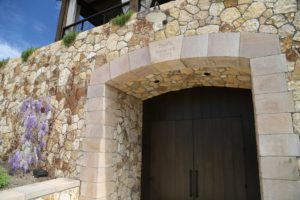
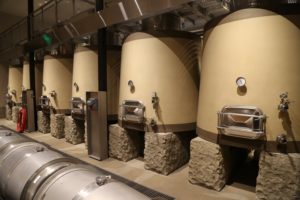
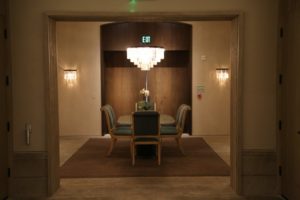
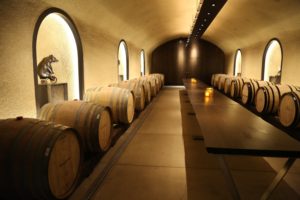
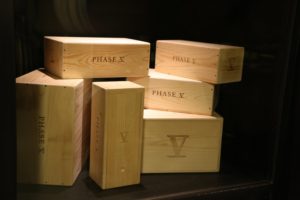
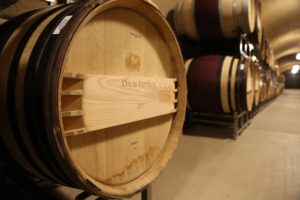
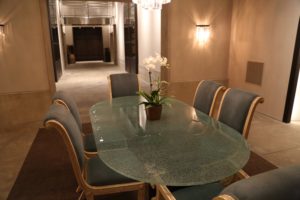
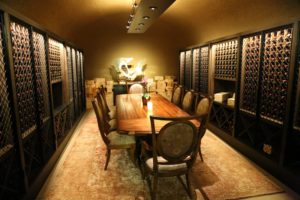
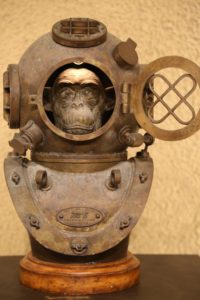
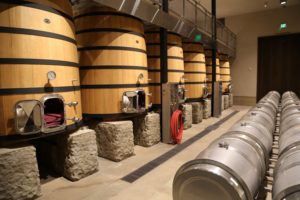
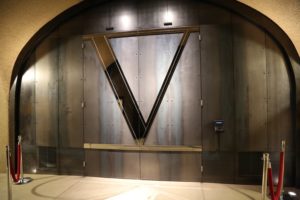
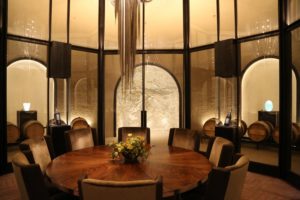
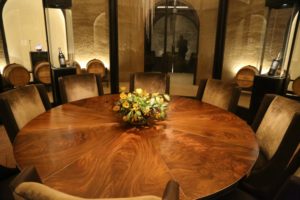


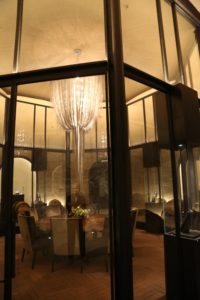
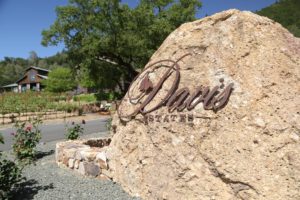
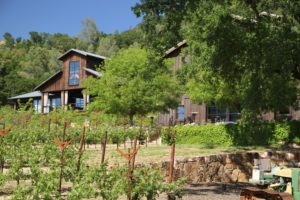
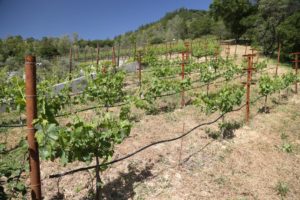
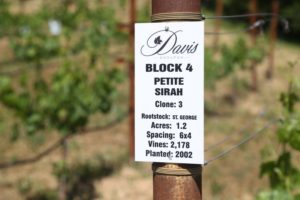
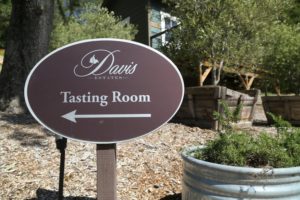
We stopped by on Saturday with the Bakers from Calistoga Ranch; what fun! The construction is amazing and the final product should be great.
I did want to send my picture of Judge Judy and myself so we will be remembered for the opening with the Bakers. What is Mike’s email address and also I heard rumors that he had a “woody” that is an eye stopper. My folks had a “woody” when I grew up in Santa Monica; my surfing days started in the late 50’s; it was quite a time. I then ran across a picture of my self with my board and my Ford stationwagon just last night. Memories they keep us going. marshall c sale
Marshall – you have to come back and visit the property – all the construction is completed! I just re-visited today for 2 hours focusing entirely on the hospitality and wine tasting – didn’t even dig into the winery operations – could have definitely stayed longer and next time I visit I’ll try to meet up with some of the wine making team 🙂